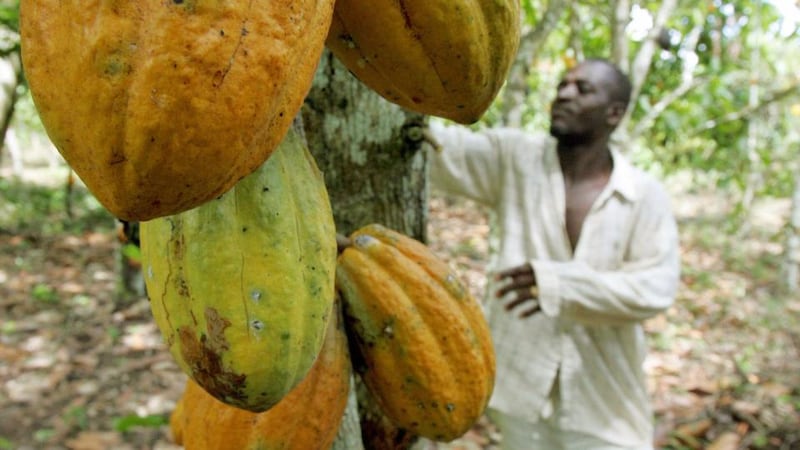I’ve been known to grouch that some children today think milk comes from Tetra Paks, not cows. And indeed, the increasing disconnect between urban culture – even in the countryside – and agriculture, and between the food we eat and our knowledge of how it is produced, is a real barrier to making the world a more sustainable place.
Still, self-righteous grouchiness is a vice all environmentalists should beware of. I discovered recently, in the most delightful of places, that I am as prone as anyone else to standing in a glasshouse and throwing stones.
The place was a garden farm – or farm garden: take your pick – on the steep upper slopes of a hillside in Grenada, in the Caribbean. It belongs to Jerry Rappaport and Nancy Meranski, and provides much of the fruit, spices, vegetables and flowers for La Sagesse, their small hotel and restaurant on the coast.


Most of the trees on the farm were unfamiliar, and one caught my eye immediately. Even in the dimness of its enclosed canopy, its large fruit pods seem to glow like lanterns, as though lit from within. The spectrum ran from shocking pink to yellow and orange, from rich dark brown to delicate speckled greys.
This was a cacao tree, Rappaport told me, and so the pods were the source of one of my favourite foods, chocolate. “It’s extraordinary that we ever discovered how to make it,” he said, explaining that the pods contain clusters of hard seeds (“beans”) covered by a viscous white membane.
This membrane is itself a tasty treat, and sucking it off the seed gives a welcome sugar boost when hiking in the forest, as I discovered the next day. But it has only the faintest chocolate flavour.
That rich dark taste so many of us love is achieved by a much more complex process: drying the cleaned seeds themselves, then grinding them into powder.
So, as I eat chocolate every day but didn’t have a clue what it was when I encountered it in the field, I’d better go to the back of the environmental class, along with the boy who thinks milk comes from a carton.
Grenada is one of several places, including Zanzibar, that claims the title “Spice Island”, and with some justification. It is the southernmost point in the Lesser Antilles archipelago in the West Indies.
This places it a little to the north of Tobago and Trinidad, which are much closer, biogeographically, to the nearby continental ecosystems of Venezuela. Grenada remains distinctively Caribbean in its flora and fauna – or as distinctive as any island can remain today, in a world we have been globalising biologically for many centuries.
Islands have fascinated biologists since well before Darwin recognised evolution in action on the Galapagos. The tendency for species in isolation to adapt and develop unique characteristics produces a wealth of varieties and, finally, endemics – new species unique to a particular place. Even an island as closely linked to a continent as Ireland is has endemic subspecies of bird: the jay, the coal tit and the dipper.
For the first few days there, without a bird guide, a common little black bird, with a curved bill that it used to draw nectar from tubular blossoms, baffled me. It often hung acrobatically upside down, and this action seemed oddly familiar.
When Rappaport lent me his guide, I realised it was a bananaquit, one of the most frequent visitors to garden feeders in Mexico and Central America. But there its plumage is an unmistakeable mixture of black, grey, white and brilliant yellow. On Grenada, however, and also on the neighbouring island of St Vincent, it has developed this oddly sober all-black endemic form.
The farm manager, Koro, is a Rastafarian who takes his principles seriously. His farming style avoids the neat rows of industrial agriculture. He mixes small plots of cabbages and peppers with stands of ginger, a huge breadfruit tree with little groves of banana or cinnamon, and a papaya tree surrounded by pineapple plants.
Many of these plants have exquisite flowers – the variety of ginger blooms alone was amazing – but they are supplemented by more conventional ornamentals, such as helliconia. Nowhere else on the island, it seems, are fruit, spices and floral horticulture mixed with such wild abandon.
This makes the farm garden full of surprises. I stumbled on some almost-black nuts enmeshed in a vivid carmine lace. They turned out to be nutmeg, with the fruit stripped off, and the mesh is mace. We regularly use both of these spices in our kitchen but were completely unfamiliar with them in this form: even “whole” nutmegs have a much lighter colour. So it’s the back of the class again for yours truly.


















